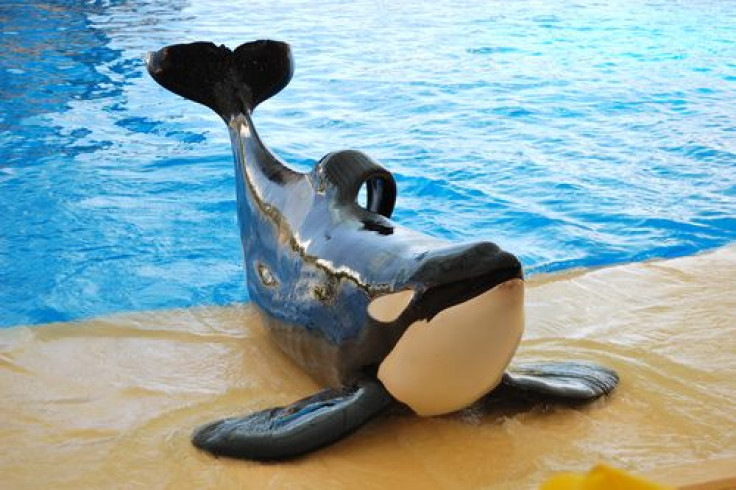Blackfish: SeaWorld Doesn't Appeal Court's Decision To Stop Trainers From Performing In The Water

Their charm and cute faces attract millions of visitors to SeaWorld Parks and Entertainment every year, but there is a reason they are called “killer whales.” In 2010, the seemingly friendly animal killed one of SeaWorld’s best trainers, Dawn Brancheau, at Orlando, Fla.'s Shamu Stadium. Afterward, the Occupational Safety and Health Administration (OSHA) issued an order prohibiting SeaWorld from allowing its trainers to enter the water while the whales performed. SeaWorld has now decided not to take the case to the U.S. Supreme Court to appeal a ruling by a federal appellate court that denied SeaWorld’s challenge to OSHA’s order.
In the order restricting trainers from access to water during performances, OSHA said SeaWorld was endangering its employees by allowing them to work so closely with the animals without protection. Instead of fighting against the citation, however, SeaWorld claims it has taken appropriate measures in the four years since then to ensure safety.
“The safety of our staff and the welfare of our animals are SeaWorld's highest priorities, and since February 2010 we have made significant safety improvements. ... We are focused on the implementation of those improvements moving forward," SeaWorld said in a statement, the Orlando Sentinel reported. "As such, we opted not to pursue further appeal of the court's decision, which was based on how we were conducting our killer whale program prior to February 2010."
The OSHA citation was issued after the 2010 incident that killed Brancheau. According to CNN, a sherriff's spokesman said Brancheau slipped and fell into the tank with the 12,000-pound killer whale, Tilikum. A witness told CNN that Tilikum pulled Brancheau into the tank and began to shake her violently, causing her shoe to come off. "Within five minutes, she was down in the tank and we saw all the thrashing and the bubbles and him pushing her with his nose,” said Paula Gillespie, a witness who attended the show with her daughter. Sirens went off, but Brancheau didn’t make it; she drowned.
OSHA investigated SeaWorld for six months following the incident and concluded that performers should only work with orcas when there are physical barriers between them. This would make it impossible for trainers to perform like they did before.
Following Brancheau’s death, the controversial documentary, BlackFish rose to the surface. The film takes a closer look at what happened to Brancheau and discusses the mistreatment of orcas that may have been an underlying cause of the traumatic event. Film director Gabriela Cowperthwaite claims that keeping killer whales in captivity is dangerous for the trainers and other humans who interact with them, and mentally damaging for the whales.
Despite the negative claims, SeaWorld says it has taken new measures to ensure the safety of employees and visitors. It's enhanced safety procedures and spent a whopping $70 million on fast-rising floors that would help trainers get out of the water quickly. The floors are used to help the whales to become acclimated to humans; so if someone falls in the water, they won’t act aggressively.
Although you will no longer see trainers in the water with the whales, SeaWorld has taken new strides to draw in audiences. It said it will double the size of the killer whale habitat, creating more space for the whales to move around. Visitors will get to see the orcas swimming in 40 feet of water, a totally new experience than what they are accustomed to.



























